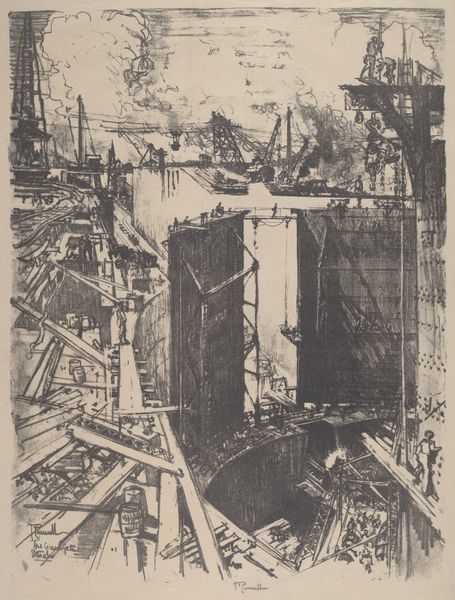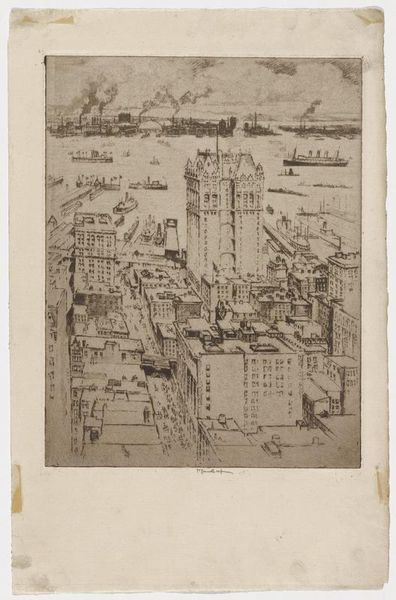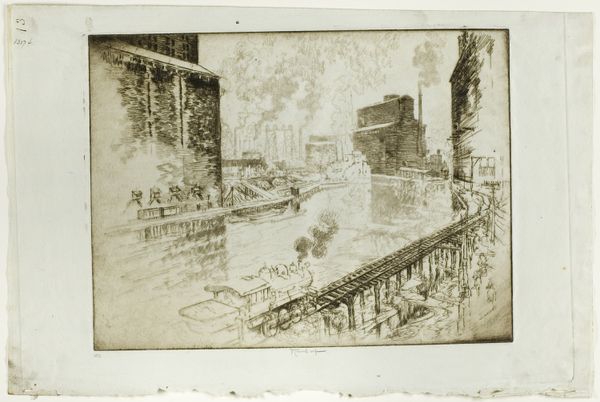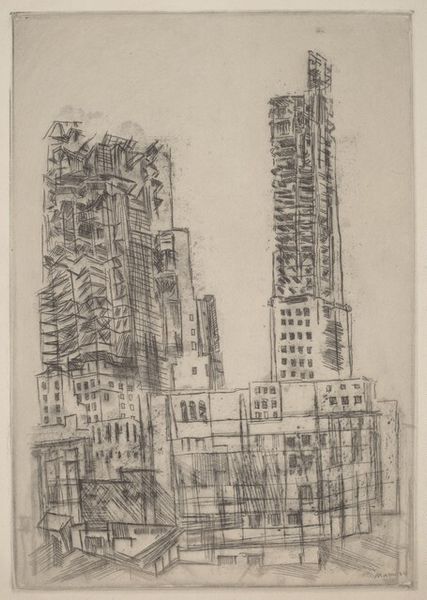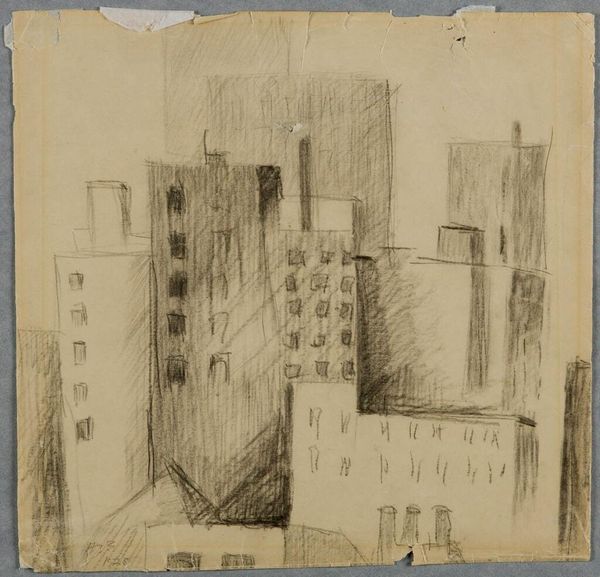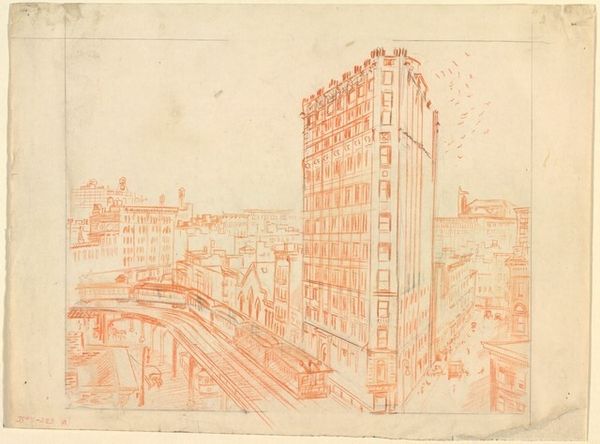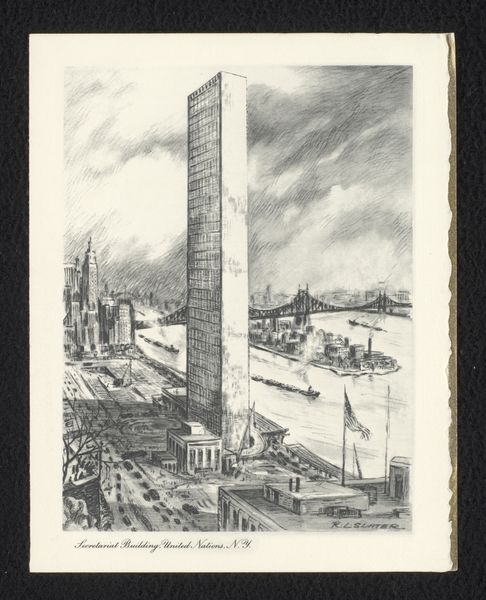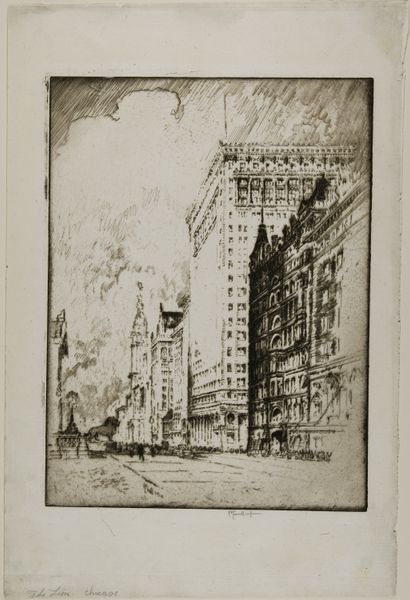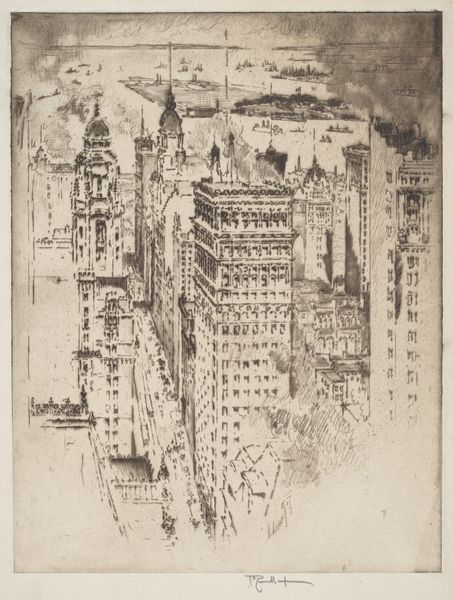
drawing, print, etching, paper
#
drawing
# print
#
etching
#
etching
#
paper
#
geometric
#
united-states
#
cityscape
#
modernism
Dimensions: 280 × 215 mm (image); 326 × 232 mm (sheet)
Copyright: Public Domain
Curator: Here we have Joseph Pennell’s "The Bridges," an etching from 1908. It captures the dynamic cityscape, the bridges, and the industrial atmosphere of early 20th-century New York. What’s your initial reaction to this print? Editor: My first impression is of immense scale. Despite its relatively small size as an etching on paper, the depiction of bridges looming over dense buildings suggests the vastness of urban infrastructure, maybe even a slightly ominous representation of progress. Curator: Pennell, deeply influenced by Whistler and a proponent of the aesthetic movement, often sought to depict the beauty in industrial scenes. "The Bridges" demonstrates that sentiment through careful attention to the lines of the infrastructure. We see in this work the narrative of the city’s upward thrust and the glorification of human achievement. Editor: But look at the layers involved in the production: from Pennell’s hand carefully scoring the image into a metal plate, to the press transferring ink onto paper. It’s labor-intensive. This clashes with the industrialized scene itself. The labor is quite human, despite representing inhuman elements. The soot from the chimneys contrasts with the stark paper. Curator: You bring up an important point. While Pennell was celebrating modern ingenuity, the production of etchings like this, and other art forms during that era, relied on the labor of skilled workers in the print shops, papermills, and so on. Furthermore, his art supported and reinforced ideas about social hierarchies in a rapidly urbanizing society. Editor: Right, consider the materiality too. Paper in this era, even for art, reflected social stratification. Higher quality paper versus mass-produced stock… who could afford such artwork, and how was it displayed, consumed? The act of etching and printing highlights this, doesn't it? Curator: It absolutely does. The medium itself informs how the piece was disseminated and received. Pennell was showcasing American modernity but through an established, yet democratized, art form: etching. That tension between technological progress and artistic tradition really complicates our reading of it. Editor: Yes. Considering its production, the materials and Pennell's process offers another layer to understanding "The Bridges." It underscores that art is never detached from labor or the means of making. Curator: This piece gives us a lot to reflect upon – on one hand, its visual testament to urbanization; on the other hand, how that image came into being and circulated. Editor: It certainly made me consider the often invisible hands behind what we see celebrated as innovation.
Comments
No comments
Be the first to comment and join the conversation on the ultimate creative platform.


